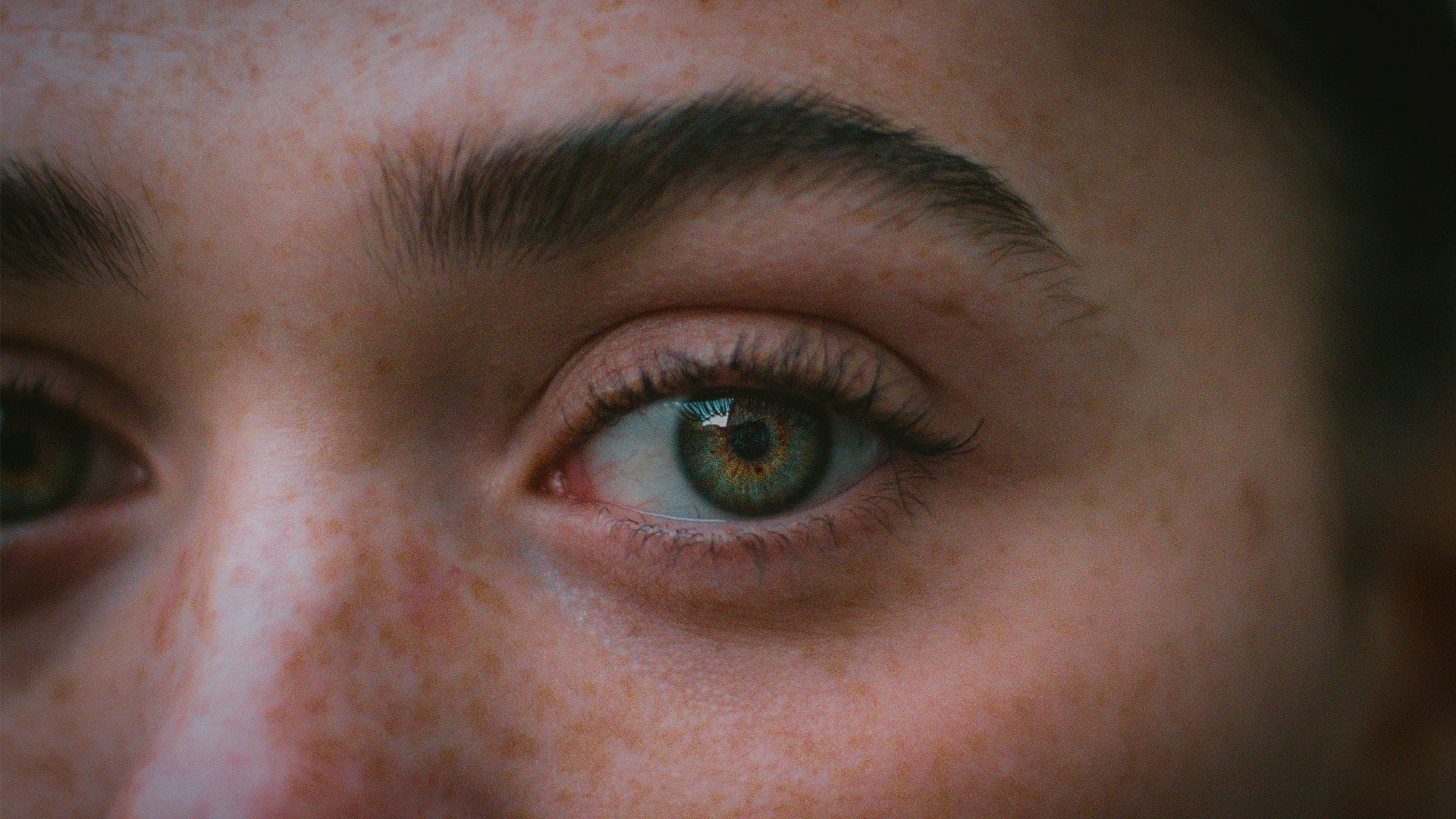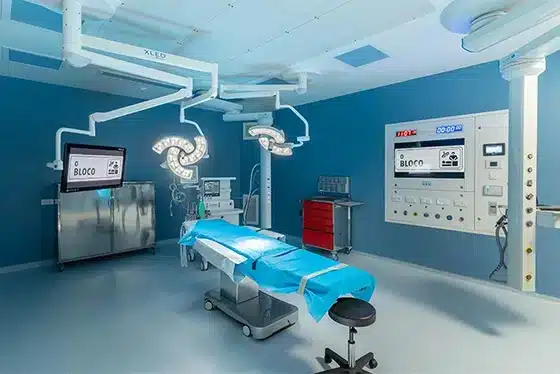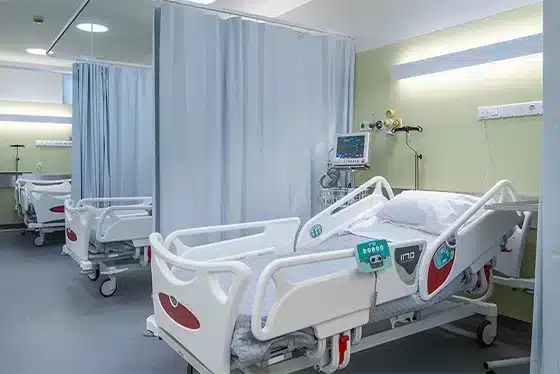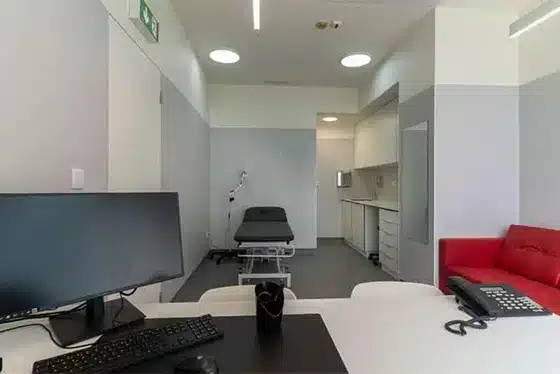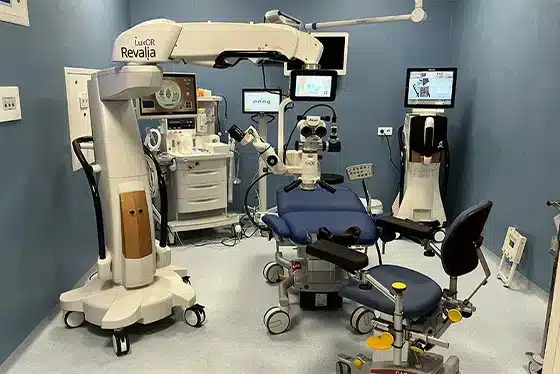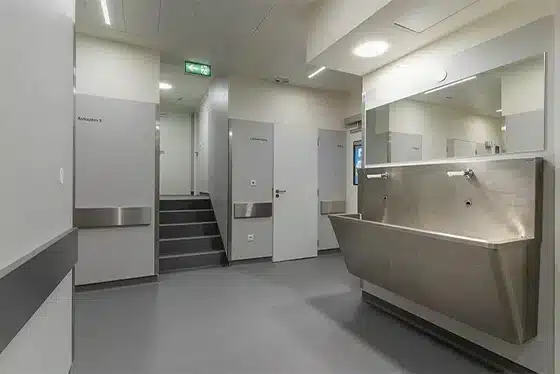Blepharoplasty
Blepharoplasty, a surgical intervention aimed at improving the appearance and function of the eyelids… See more →
- Highly qualified team with over ten years of experience in performing both simple and complex surgeries.
Stars on Google.
Medical cases

Hooded eyes (dermatochalasis): Upper blepharoplasty
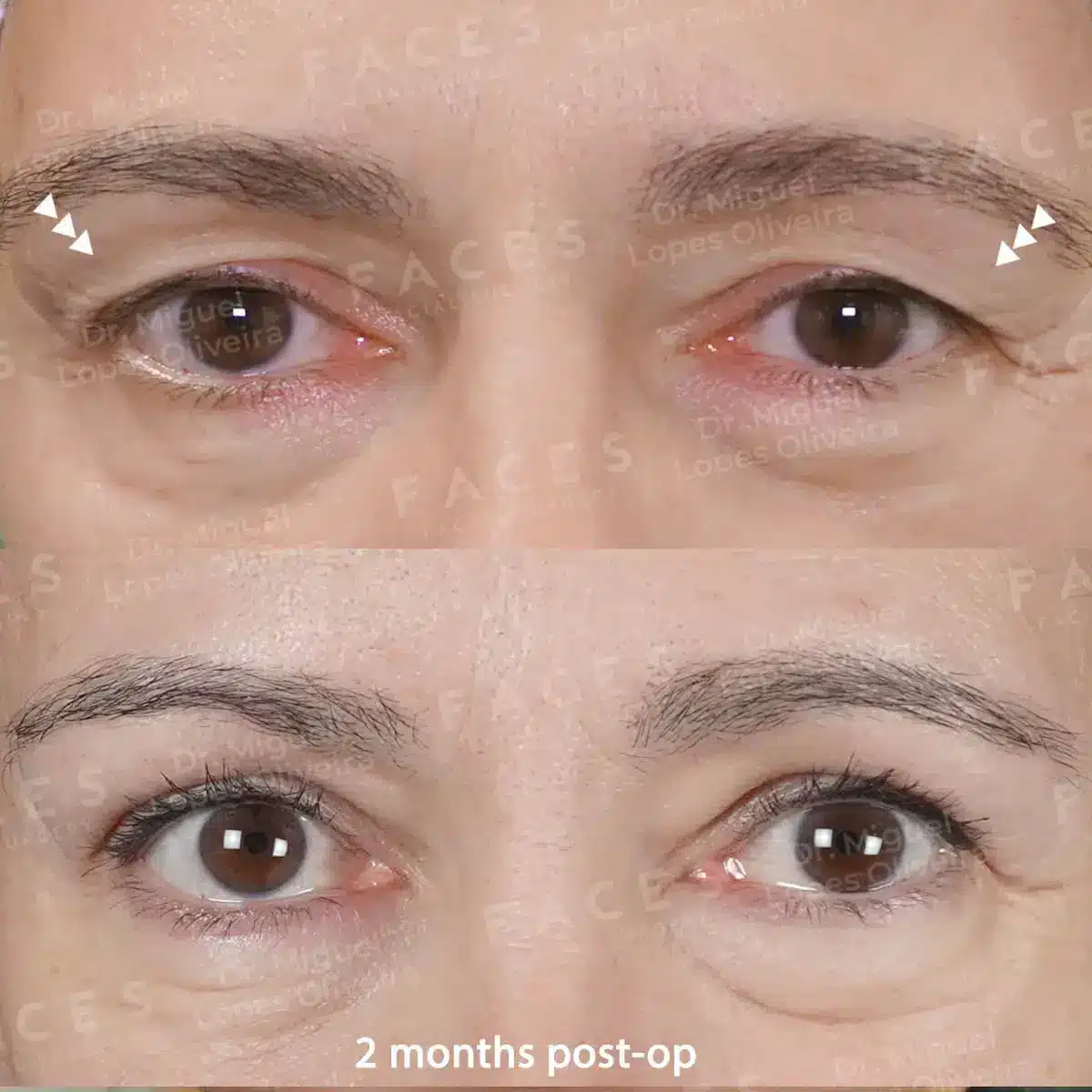
Hooded eyes (dermatochalasis): Upper blepharoplasty
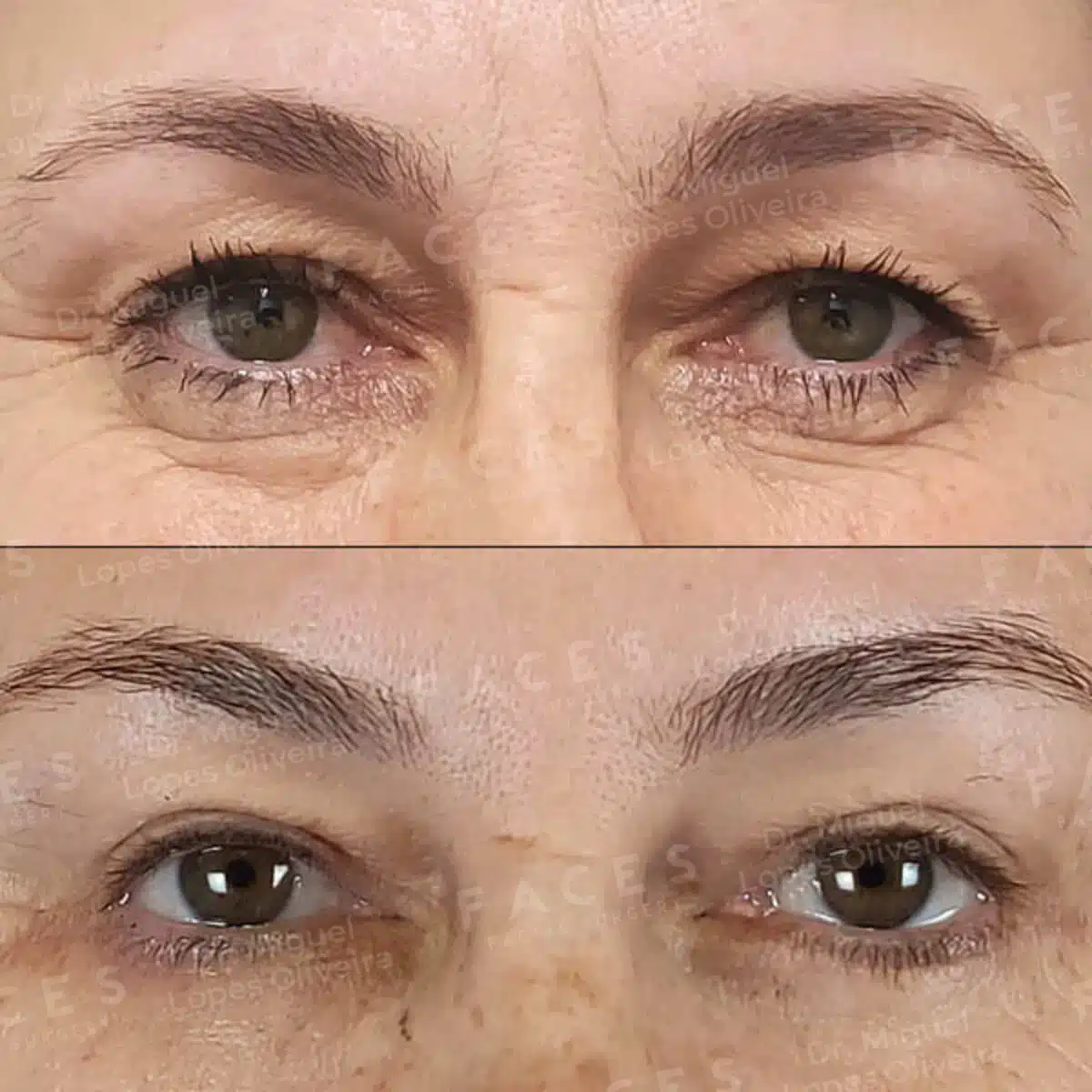
Upper and lower eyelid surgery
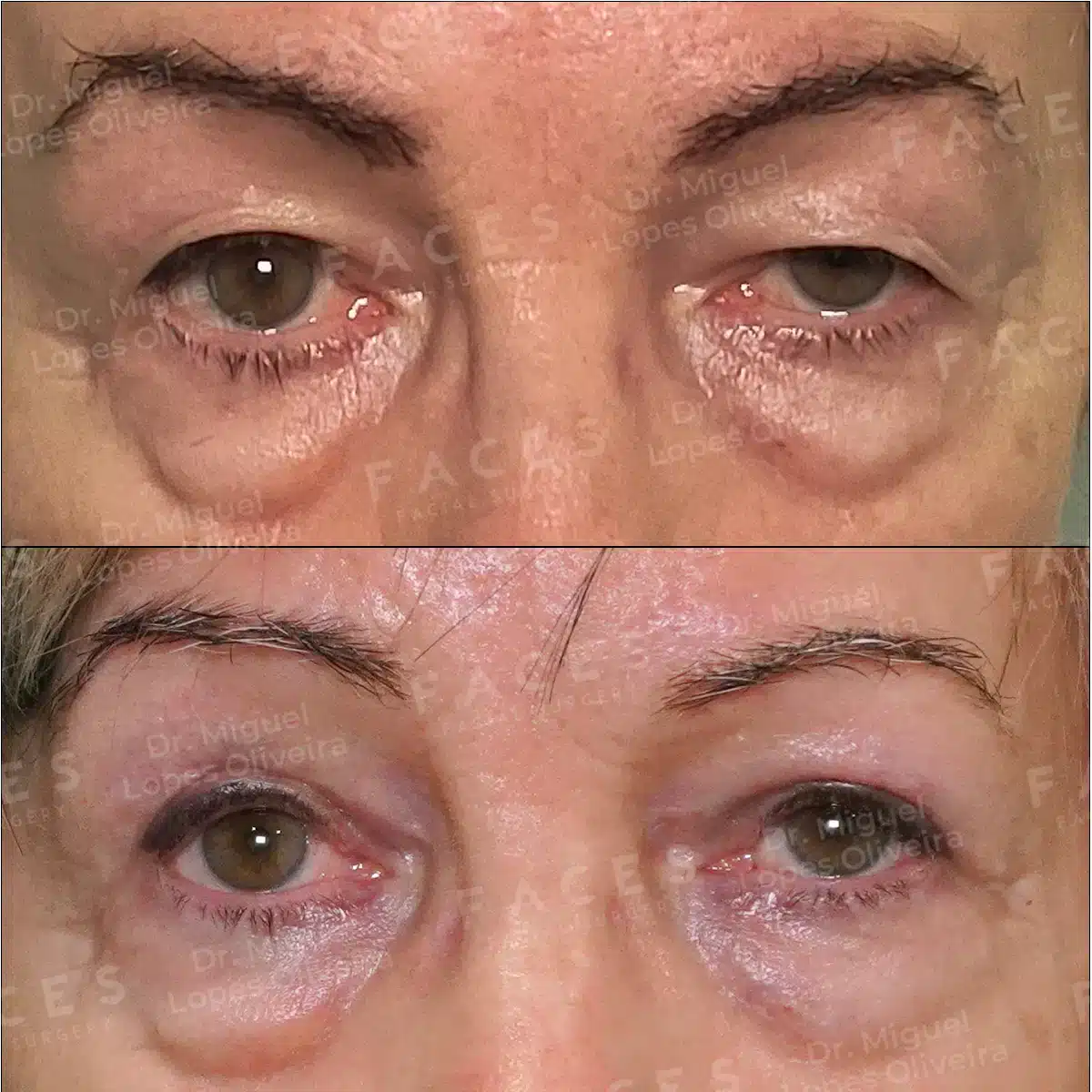
Hooded eyes (dermatochalasis): Upper blepharoplasty
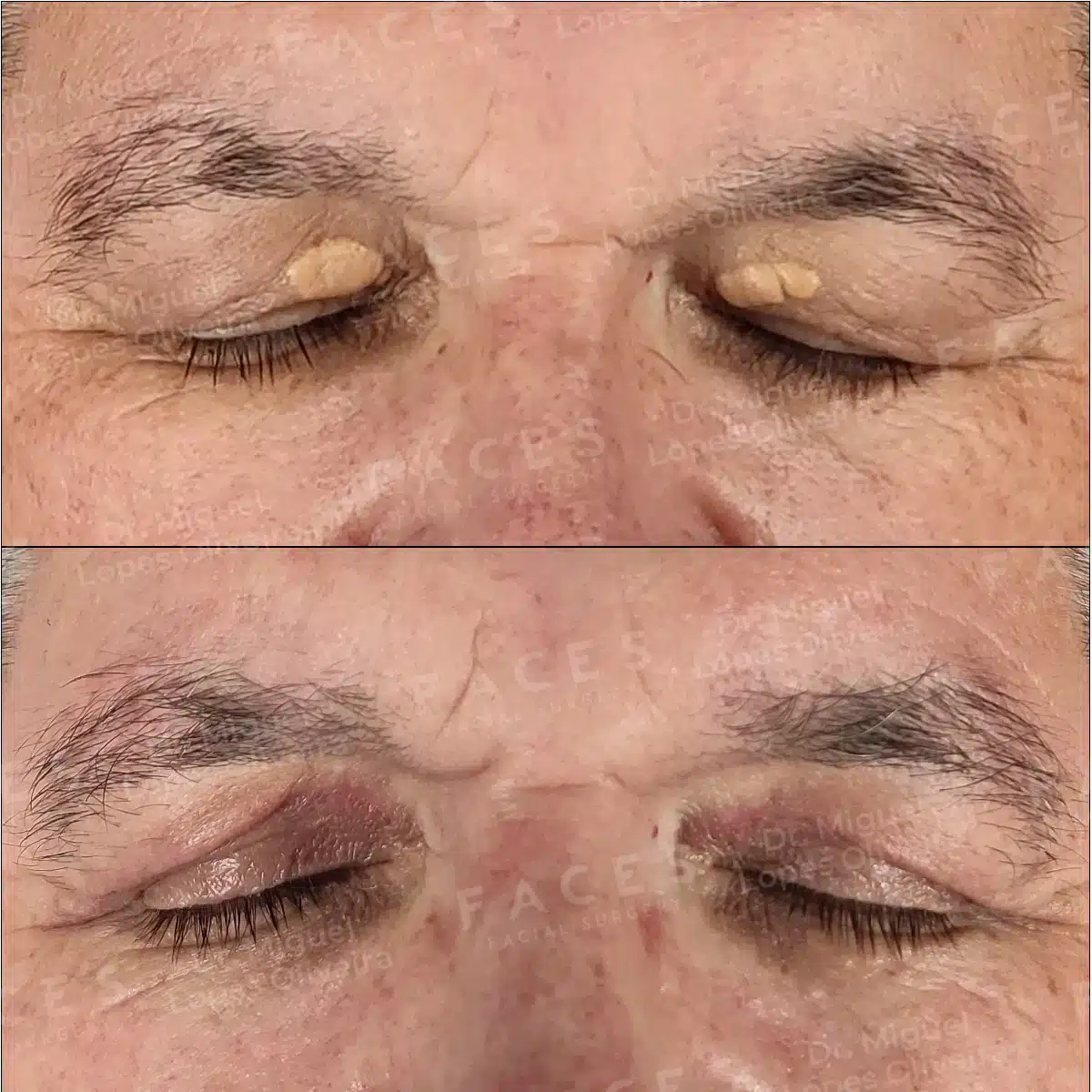
Xanthelasma
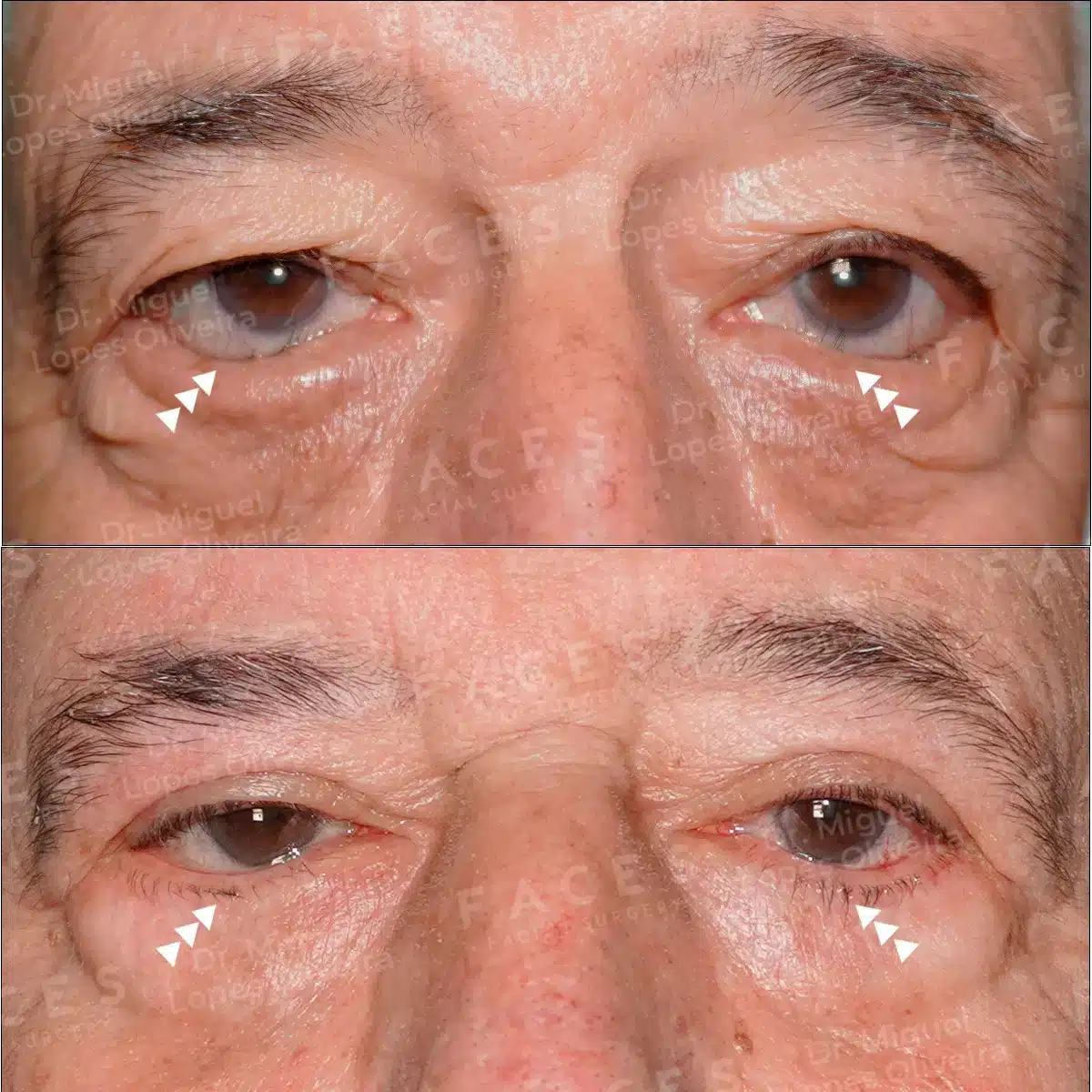
Entropion (inward turning of the eyelid)
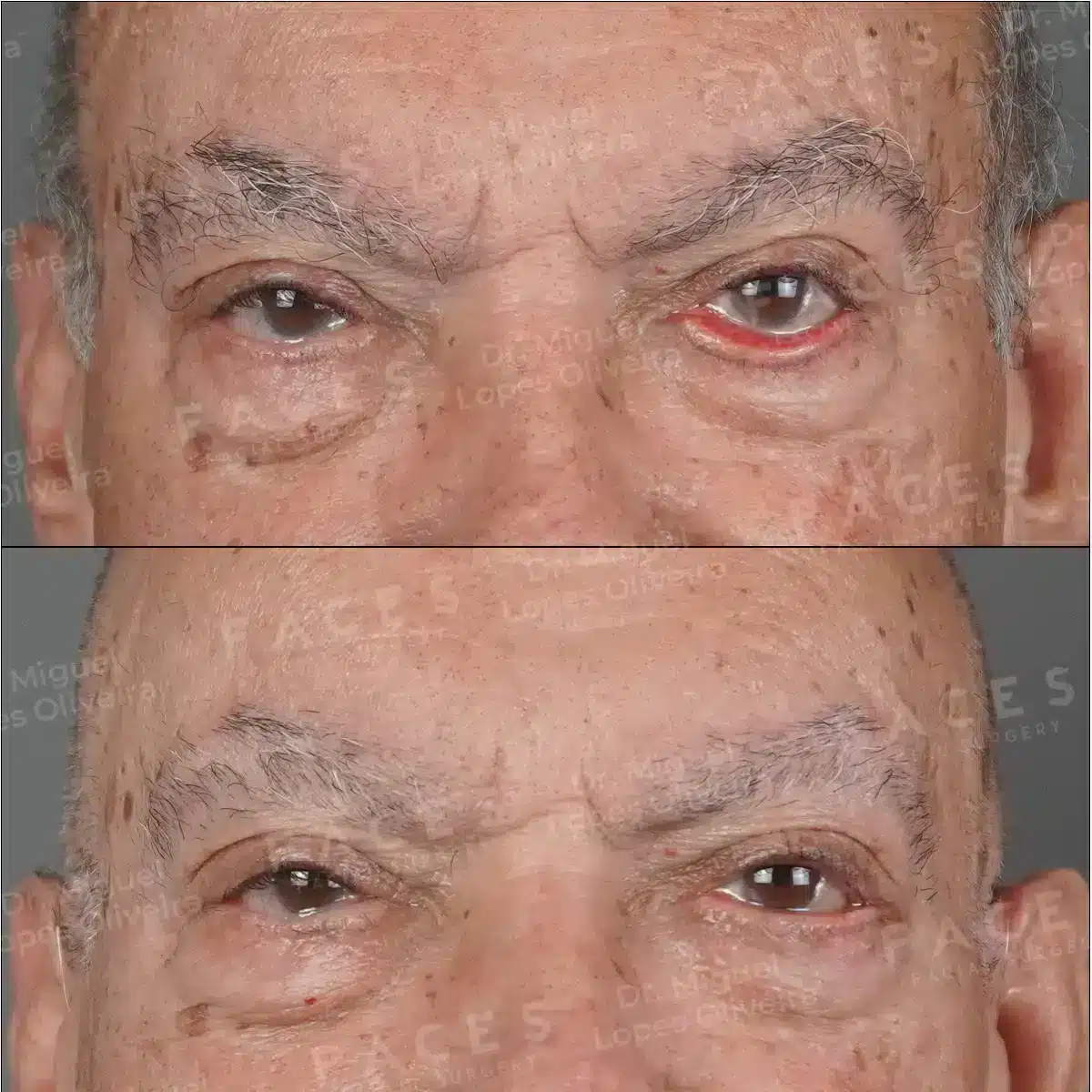
Ectropion
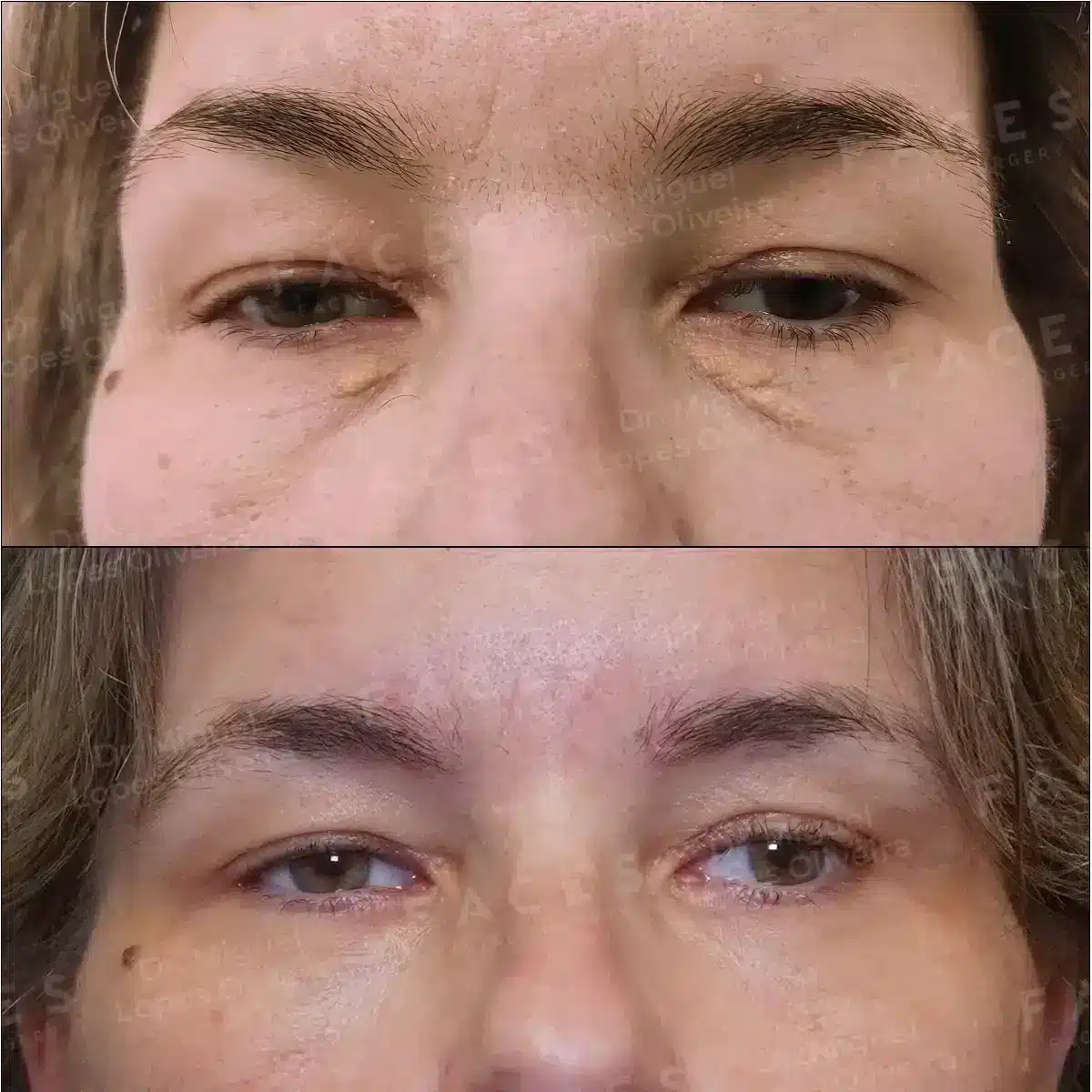
Xanthelasma
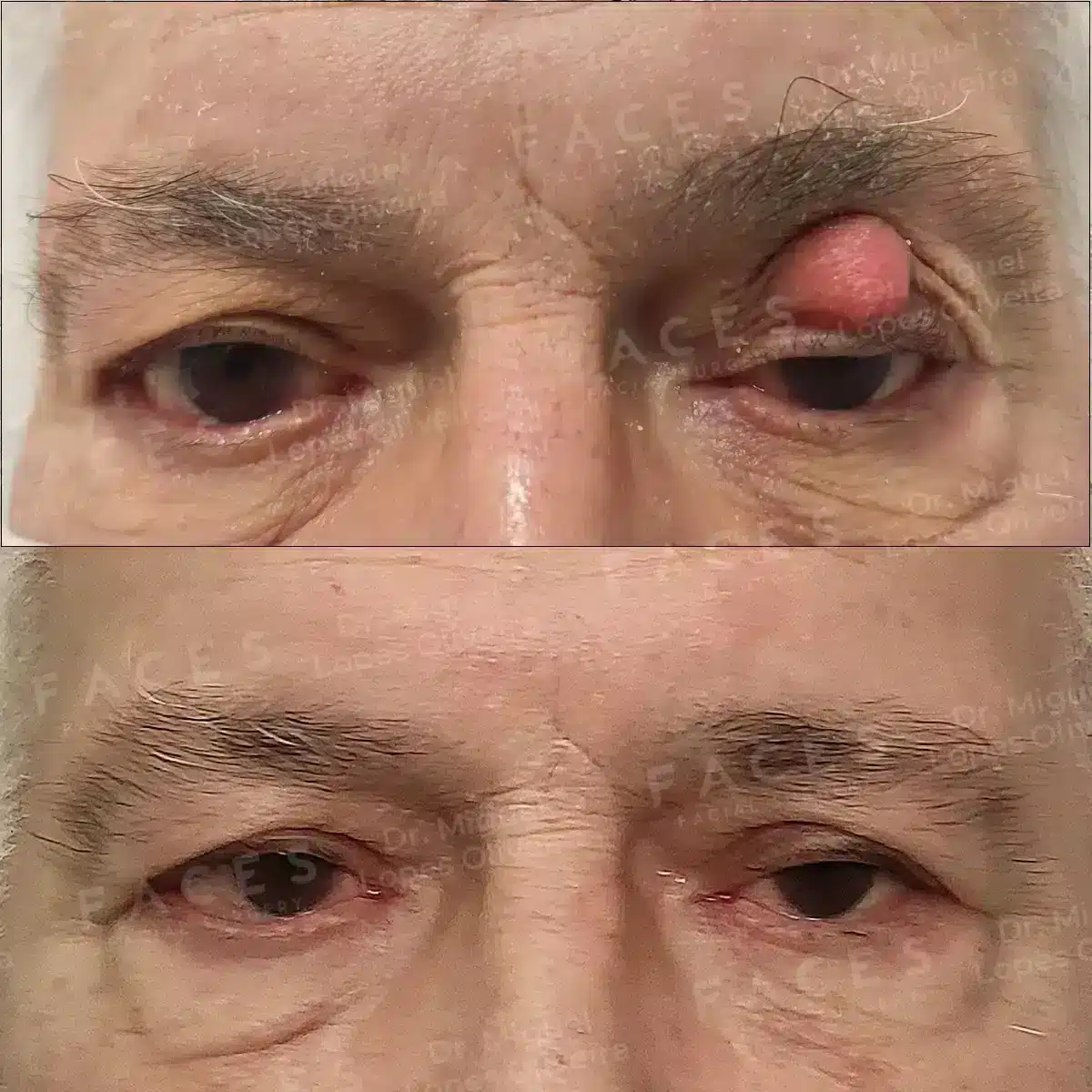
Skin cysts

Chalazion (cysts)
Blepharoplasty
Common symptoms addressed by Blepharoplasty:
- Hooded eyes (excess upper eyelid skin);
- Eye bags (puffiness under the eyes);
- Droopy eyelids (ptosis);
- Tired or aged appearance around the eyes;
- Impaired vision due to excess eyelid skin (sometimes imparing reading, watching television, or even walking and climbing stairs).
Blepharoplasty: definition, procedure and objectives
Blepharoplasty is a surgical procedure designed to improve the appearance and function of the eyelids.
This outpatient procedure is typically performed under local anesthesia, with an anesthetist present for more complex cases to ensure patient comfort and safety.
The surgery involves removing excess skin, repositioning fat, and sometimes adjusting muscles to achieve a more youthful appearance and enhance the visual field.
It’s particularly beneficial for individuals with droopy eyelids and under-eye bags.
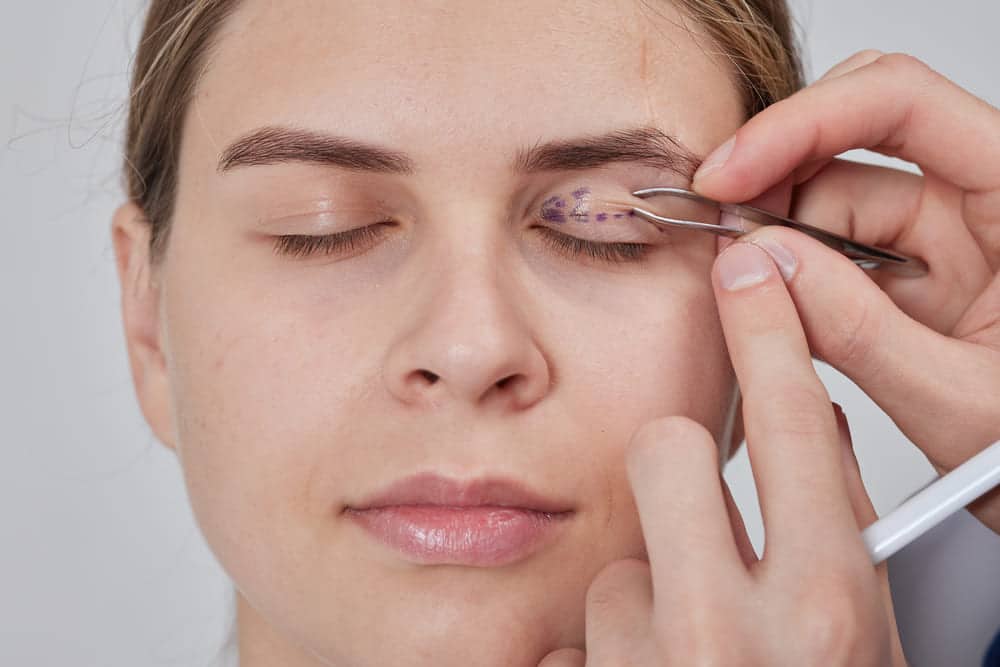
The different types of blepharoplasty: upper, lower and combined procedures
Blepharoplasty encompasses various types tailored to individual needs, either for aesthetic or functional purposes: upper blepharoplasty, lower blepharoplasty, or a combined approach.
Upper blepharoplasty
Upper blepharoplasty addresses the issue of excess upper eyelid skin that can obstruct the visual field, impact neck posture, and lead to frequent rubbing of the eyes or the need to lift the eyelid manually for specific tasks.
Lower blepharoplasty
On the other hand, lower blepharoplasty repositions fat pads, reduces wrinkles, and enhances the overall appearance of the eye area.
Combined blepharoplasty
A combined blepharoplasty involves both upper and lower eyelid procedures.
Brow lift
A brow lift can be performed alongside blepharoplasty to correct droopy eyebrows and further enhance the upper face. This procedure contributes to a more youthful and vibrant appearance.
Canthoplasty and canthopexy
These procedures address the positioning of the lateral edges of the eyelids. They provide additional support, particularly for the lower eyelid, and can enhance the overall shape of the eye.
Correcting ectropion and entropion
Removing xanthelasmas
Xanthelasmas are yellowish cholesterol deposits that can appear around the eyes. While not harmful, many find them cosmetically undesirable. Blepharoplasty techniques can be used to remove these deposits safely and effectively.
Trending Blepharoplasty procedures
As aesthetic preferences evolve and social media influences beauty standards, certain blepharoplasty procedures have gained popularity. These trending techniques address specific concerns that many patients are eager to correct. While the fundamental principles of blepharoplasty remain the same, surgeons have refined their approaches to meet these new demands. Let’s explore some of the most sought-after blepharoplasty procedures that are currently trending
Addressing Hooded Eyes
Hooded eyes, where excess skin folds over the upper eyelid, can be effectively treated with upper blepharoplasty. This procedure removes the extra skin, opening up the eye area and often improving peripheral vision.
Treating Eye Bags
Lower blepharoplasty is excellent for addressing eye bags. The procedure can involve fat repositioning or removal, skin tightening, and sometimes muscle adjustment to create a smoother under-eye area.
The "Foxy Eyes" Trend
The “foxy eyes” look, characterized by a slight upward tilt at the outer corner of the eyes, has gained popularity. While traditional blepharoplasty can contribute to this appearance, it’s often achieved through a combination of techniques, including careful upper eyelid surgery and sometimes a lateral canthopexy.
The preoperative process: consultation, assessment, and preparation for your blepharoplasty
The preoperative process is a crucial step before undergoing blepharoplasty to ensure the safety and effectiveness of the procedure.
It begins with a consultation with a qualified and experienced blepharoplasty surgeon. During this consultation, the surgeon will review your medical history and discuss your expectations for the surgery.
Open and honest communication about your general health, current medications, and any existing health conditions is vital as they can impact the outcome of the surgery.
The surgeon will assess your eyelids, including the amount of skin and fat, eyebrow position, and muscle function. Based on this assessment, the surgeon will recommend the most suitable type of blepharoplasty for you.
Additionally, the consultation will provide instructions on how to prepare for the procedure, which may include avoiding certain medications and supplements and following a healthy diet to aid in recovery.
If you have any questions or concerns during the preoperative process, it is important to discuss them with your surgeon to ensure you feel prepared and confident before your blepharoplasty.
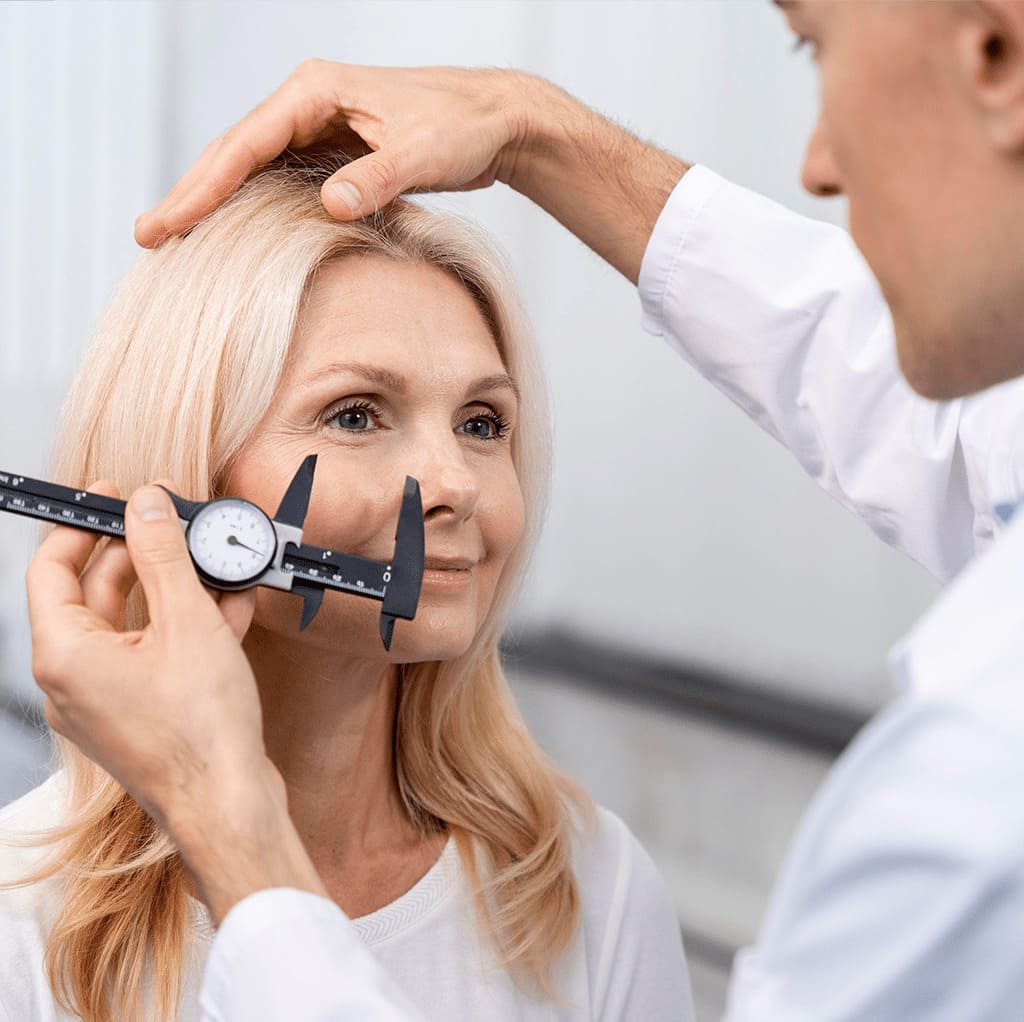
Step by step: a detailed overview of the surgical technique of blepharoplasty
Blepharoplasty is a relatively simple surgery, but it is still a surgical procedure that requires care and attention. The surgical technique of blepharoplasty follows this general protocol:
- Anesthesia;
- Incisions;
- Removal or repositioning of excess fat, skin and muscle;
- Canthopexies;
- Sutures;
- Dressing.
The entire procedure can take 1 to 3 hours, depending on the type of blepharoplasty and the extent of the procedure. The skin of the eyelids has an excellent healing capacity, and the scars are practically imperceptible or even invisible when it is possible to make an incision inside the eyelid at the level of the conjunctiva.
Postoperative care and recovery: what to expect after eyelid surgery
After your blepharoplasty surgery, following your postoperative care instructions is essential to ensure a quick and uneventful recovery. Here are some precautions:
Rest
Reducing activity for a few days after surgery is advisable, avoiding efforts and physical exercises during the first ten days. You can work on the computer two days after the surgery, although you should take some breaks.
Cold dressings
Applying cold dressings to the eyelids helps reduce edema.
Ointments and eye drops
Your surgeon will prescribe drops to reduce swelling, help prevent infection, and keep your eyes hydrated.
Avoid scratching or rubbing your eyes
This irritates the skin, increases edema and prolongs recovery.
Avoid sun exposure
It is essential to avoid direct sun exposure in the eyelid region and wear sunglasses to protect yourself.
The time it takes to recover from surgery varies depending on the type of procedure. While there may be noticeable improvements within the first few days, the success of the surgery is typically evaluated in the third month once the muscle tissues have fully adjusted to the new position of the skin.
The most important thing is to follow the medical recommendations and clarify any doubts that may arise.
Risks and potential complications: navigating the challenges of blepharoplasty
As with any surgical procedure, blepharoplasty involves risks and potential complications. Some of the most common complications of blepharoplasty include edema (swelling), bruising, infection, and temporary changes in eyelid sensation, such as itching.
Therefore, it is crucial to discuss the possible risks and complications of blepharoplasty with the surgeon before deciding to undergo the procedure and to follow all pre- and postoperative instructions to minimize the risk of complications and ensure a safe and effective recovery.
Realistic expectations: evaluating the potential outcomes of eyelid surgery
When considering eyelid surgery, patients need to have realistic expectations. The main goal of the surgery is to improve both the appearance and function of the eyelids while maintaining their protective barrier for the eye. Your surgeon will strive to create a natural, balanced result that complements your facial features.
Frequently asked questions about Blepharoplasty
How long does recovery from eyelid surgery take?
Recovery time varies, but most patients return to normal activities within 10-14 days. Full results are typically visible after 6-8 weeks.
Will blepharoplasty remove all my wrinkles around the eyes?
While blepharoplasty significantly improves the eye area’s appearance, it primarily addresses excess skin and fat. For complete wrinkle treatment, additional procedures like injection or laser resurfacing might be recommended.
Can blepharoplasty fix my droopy eyelids?
Yes, upper eyelid blepharoplasty is very effective in correcting droopy eyelids (ptosis), improving both appearance and vision.
Is eyelid surgery painful?
Most patients experience minimal discomfort. Pain medication is prescribed for the first few days, but many find over-the-counter pain relievers sufficient.
Will I have visible scars after blepharoplasty?
Incisions are made in the natural creases of the eyelid, making scars virtually invisible once healed.
How long do the results of eyelid surgery last?
Results are typically long-lasting, often 10 years or more. However, your eyes will continue to age naturally.
Can blepharoplasty be combined with other facial procedures?
Yes, blepharoplasty is often combined with other procedures like facelifts, brow lifts, or non-surgical treatments for comprehensive facial rejuvenation.
Ready to rejuvenate your eyes?
If you’re considering blepharoplasty or have questions about eyelid surgery, we’re here to help. Our experienced team at FACES is committed to providing personalized care and achieving natural-looking results.
Take the first step towards refreshed, youthful-looking eyes. Schedule your consultation today!
